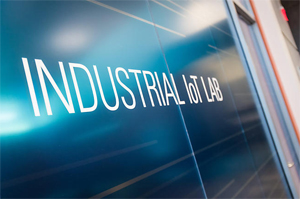
The emergence of Industrial Internet of Things (IIoT) and its implementation in test and measurement (T&M) is expected to transform the industry. Through digital connectivity, the use of test equipment can be maximized, improving the quality of testing and opening a host of future opportunities. In a highly competitive environment, vendors must develop product differentiation and branding strategies in order to penetrate smart testing opportunities.
Frost & Sullivan's latest analysis, Adoption of Industrial IoT in the Global Test and Measurement Market, Forecast to 2022, finds that the value of the IIoT in test and measurement market is expected to reach $104.8 million by 2022 growing at a compound annual growth rate of 6.7 percent from 2016. The research assesses market dynamics including trends, drivers, restraints, forecasts, mega trends and industry convergence implications, and opportunities in end-user verticals. Profiles of key competitors such as National Instruments, Fluke Corporation, Keysight Technologies, and Rohde and Schwarz are also provided.
"Currently, original equipment manufacturers are cautious when it comes to IIoT technology adoption with significant concern toward security issues and limited entrants in the market," said Frost & Sullivan Measurement & Instrumentation Research Analyst Anisha Nikash Dumbre. "However, by 2020, a number of IIoT-enabled test systems are expected to be launched, catering to diverse services and fields within the industrial ecosystem."
By 2025, the next generation of T&M systems would have 'learned' from their past experiences, enabling advanced testing measures and outcomes. Democratization of IIoT would lead to cheaper Software-as-a-Service (SaaS) models, ultimately leading to more than 80 percent of testing vendors adopting this technology within their test systems. The integration of testing capabilities with modular form factor will further augment growth opportunities in this sector.
Strategic imperatives for player's success and growth in this market include:
- Embracing transformational changes brought about by IIoT and offering better testing methods like Big Data, predictive analytics, and automation to customers;
- Integrating test capabilities and anticipating the changing system requirements;
- Adopting faster and more accurate modular form testing methods and remote monitoring to reduce the cost of testing; and
- Using data analytics to give greater accuracy and provide clients with substantial cost savings.
"In the future, there will be more focus on achieving zero defects in products and therefore the need for smarter test systems. Thus, no waste or rework will be caused, thereby avoiding revenue loss," noted Dumbre. "With this in mind, there will be a heavy focus on the research and development stage of the equipment to ensure zero defects. Continuous monitoring of equipment and IIoT technology will become the most important aspect to achieving zero defects."
Edited from information provided by Frost & Sullivan. More information available at http://frost.ly/21f






